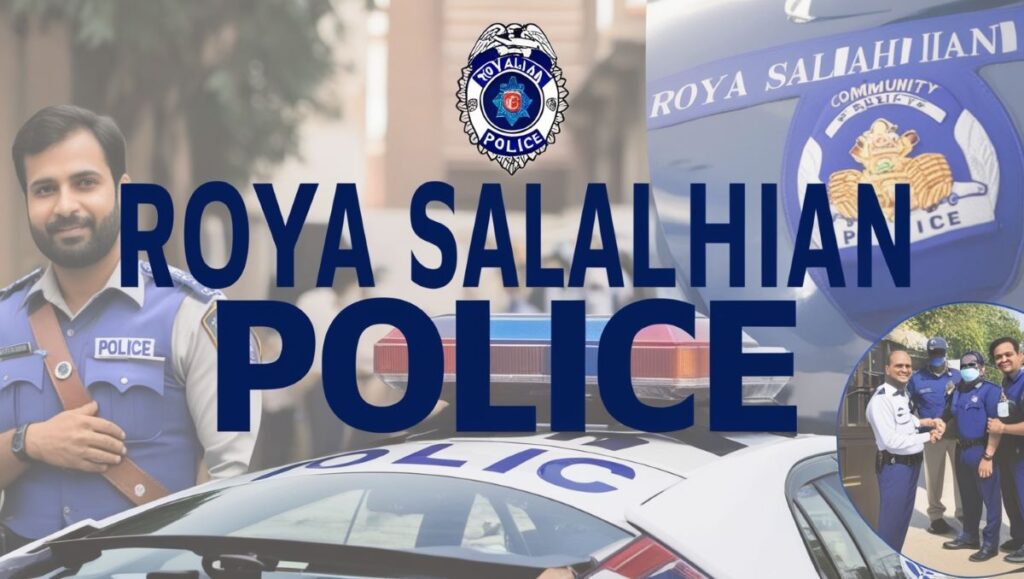roya salahian police is not just a name in the world of policing; she’s a force for change. With years of experience under her belt, she has transformed how law enforcement operates in her community. As policing faces scrutiny and calls for reform, Salahian stands out as a trailblazer who embraces modern practices to meet today’s challenges. Her approach combines innovation with empathy, setting new standards in an ever-evolving landscape. Let’s explore how Roya Salahian is reshaping the future of law enforcement and making waves across the nation.
The traditional ways of policing vs modern practices
Traditional policing often relies on a reactive approach. Officers respond to crimes after they occur, focusing heavily on enforcement and punishment. This method can create a distance between the police and the communities they serve.
Modern practices, however, emphasize proactive strategies. Community engagement is at the forefront of this shift. Police departments now prioritize building trust with citizens to foster collaboration.
Data-driven tactics play a crucial role as well. Analyzing crime patterns allows law enforcement to allocate resources more effectively, preventing crime before it happens.
Technology has transformed communication methods too. Social media platforms enable officers to interact directly with community members in real-time, fostering transparency and open dialogue.
This evolution symbolizes a broader understanding of public safety—one that values prevention over mere reaction while acknowledging that every community deserves tailored approaches for its unique challenges.
How Roya Salahian has implemented modern techniques in her department
Roya Salahian has revolutionized her department by embracing technology. She introduced data analytics to identify crime hotspots, allowing officers to allocate resources more efficiently.
Community engagement is another cornerstone of her approach. Salahian established outreach programs that foster trust between the police and residents. This initiative encourages open dialogue and collaboration in addressing local concerns.
Training plays a crucial role as well. Officers are equipped with skills in de-escalation techniques and mental health awareness, enhancing their ability to handle complex situations calmly.
Salahian also promotes transparency through social media platforms. Regular updates on departmental activities create accountability and keep the community informed.
Her innovative methods have not only modernized policing but also inspired other departments across the nation to rethink traditional practices.
The impact of these practices on crime rates and community relations
Roya Salahian’s innovative practices have led to significant changes in crime rates. By focusing on community engagement, her department has fostered trust between officers and residents. This approach encourages open dialogue, allowing locals to voice concerns directly.
Crime prevention strategies are now proactive rather than reactive. Officers collaborate with community groups, identifying potential issues before they escalate. As a result, neighborhoods feel safer and more connected.
The shift towards transparency also improves public perception of law enforcement. Citizens appreciate the commitment to accountability and ethical policing standards.
These transformations enhance cooperation; reports of suspicious activities increase as citizens feel empowered to act alongside their police force. The ripple effect is evident—lower crime rates and stronger community ties make for a healthier environment for all involved.
Challenges faced by Roya Salahian in implementing these changes
Roya Salahian has faced numerous challenges in her quest to modernize policing practices. One significant hurdle is resistance from within the department. Not all officers are open to new techniques, which can lead to friction and a slow adaptation process.
Balancing traditional policing methods with innovative approaches poses another challenge. Many community members still value conventional tactics, creating a gap between expectations and reality.
Funding constraints also surface frequently. Implementing advanced technology requires financial investment that may not always be available, necessitating creative solutions for resource allocation.
Moreover, building trust takes time. As she introduces changes, some residents remain skeptical about their effectiveness and intention.
Ensuring adequate training for her team presents an ongoing struggle. New methodologies require comprehensive understanding and skill development among police personnel before they can be fully effective.
Future plans and goals for the police department under Roya Salahian’s leadership
Roya Salahian envisions a police department that not only combats crime but also strengthens community ties. Her focus is on building trust through transparency and communication.
One of her primary goals is to expand community outreach programs. These initiatives aim to foster relationships between officers and residents, encouraging collaboration in addressing local issues.
Salahian plans to invest in technology for data-driven policing. This approach will enhance decision-making processes and resource allocation, ensuring the department operates efficiently.
Training protocols are set for an overhaul as well. Incorporating mental health resources into officer training reflects her commitment to holistic law enforcement practices.
Under her guidance, the department aims to diversify its workforce. A varied team can better relate to the community it serves, promoting inclusivity at every level of policing.
Conclusion:
Roya Salahian has emerged as a significant figure in the realm of modern policing. Her unique approach blends traditional law enforcement techniques with innovative practices that resonate with today’s community needs. By fostering collaboration and open communication, she has effectively rebuilt trust between the police department and the communities they serve.
As crime rates decline and public relations improve, other departments are beginning to take notice of her methods. However, it hasn’t been without challenges. Resistance to change is common in any established system. Yet, Roya’s determination shines through as she navigates these obstacles while staying focused on her vision for a safer environment.
Looking ahead, Roya Salahian intends to continue evolving police strategies by integrating technology and enhancing training programs for officers. This forward-thinking mindset not only promises an improved response to crime but also ensures that community engagement remains at the forefront of policing efforts.
The journey of roya salahian police is one marked by resilience and innovation—an inspiring model for future leaders in law enforcement everywhere.



